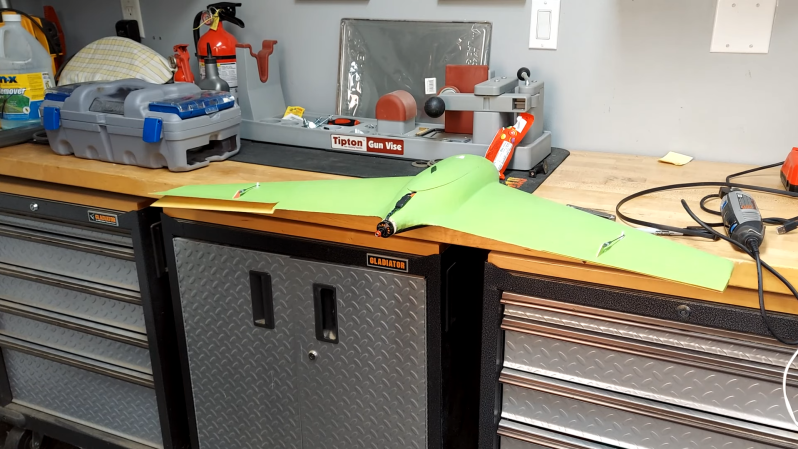Flying wings are popular options for fixed-wing FPV flying, but they have one rather annoying characteristic: yaw wag. The flying wing will wobble on the yaw axis while flying, and this side-to-side movement is visible on the pilot’s FPV video feed. With a combination of split rudders and ArduPilot, [Think Flight] eliminated wing wag without using any vertical stabilizers.
Yaw wag usually occurs on flying wings that use a pair of small winglets instead of a large vertical stabilizer on the centerline. Split rudders, also known as differential spoilers, can be used for active yaw control by increasing drag on either wing independently. However, this requires very rapid corrections that are very difficult to do manually, so this is where ArduPilot comes in. [Think Flight] used its yaw dampening feature in combination with differential spoilers to completely eliminate vertical stabilizers and yaw wag. This is the same technique used on the B-2 stealth bomber to avoid radar reflecting vertical stabilizers. [Think Flight] also used these clamshells spoilers as elevons.
Using XFLR5 airfoil analysis software, [Think Flight] designed built a pair of flying wings to use these features. The first was successful in eliminating yaw wag, but exhibited some instability on the roll axis. After taking a closer look at the design with XFLR5, he found air it predicted that airflow would separate from the bottom surface of the wing at low angles of attack. After fixing this issue, he built a V2 to closely match the looks of the B2 bomber. Both aircraft were cut from EPP foam with an interesting-looking CNC hot wire cutter and laminated with Kevlar for strength.
ArduPilot is an incredibly powerful open source autopilot system that is constantly evolving. We’ve recently seen it used on an incredible 10 hour 45 minute electric RC flight, but it can also be used for ekranoplans, rovers and boats.















Way more interested in his wire cutter apparatus.
One of the editors mentions his pretty often on the Hackaday podcast. There’ve also been a good number of articles.
https://hackaday.com/tag/hot-wire/
Also a good way of making the RCS lower.
Neat, but seems like a lot of added complexity just to avoid a vertical stabilizer. Is there some practical reason not to have one, or is it just for the look?
Google the term Proverse Yaw. A. Bowers has done lots of research on how to battle adverse yaw as birds do it with a twisted wing tip.